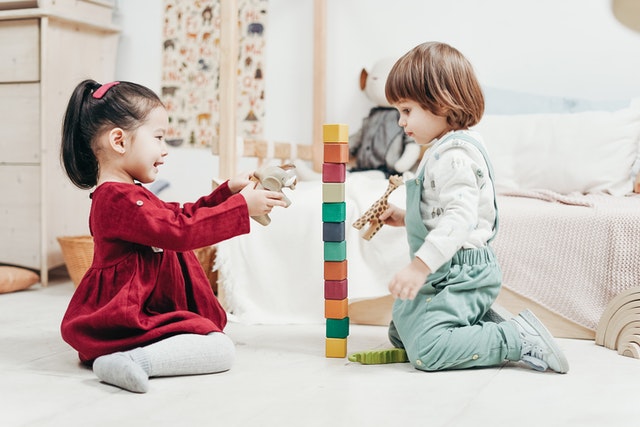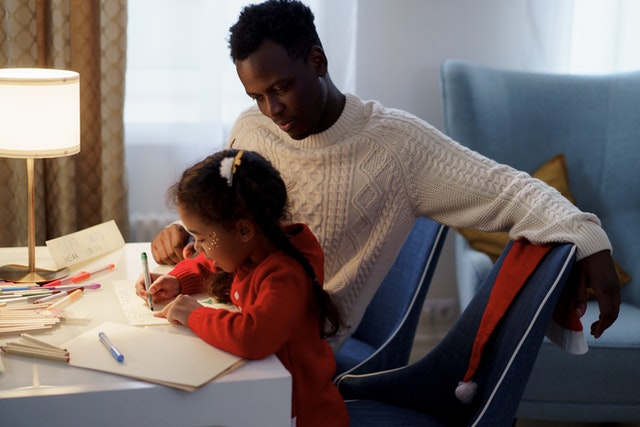Writing is an important life skill and a key method of communication, so it’s no wonder that it’s one of the first things children learn in school! Looking for some easy ways to help support your child’s budding writing skills at home? From building fine motor skills to creative ideas for making learning fun, here are our top tips on how to help your child learn to write!
Top Tips on How to Help Your Child Learn to Write:
- Start early
- Give children a special writing space & provide supplies
- Read, read, read
- Praise the effort, not the result
- Make it fun!
1. Start early

Most children will achieve the motor strength necessary to hold a pencil between their thumb and index finger between the ages of 3 and 6. But the act of writing doesn’t just magically begin when children sit down with a pencil and paper. In the early years of a child’s life, they are already building the vital skills and physical strength necessary to write! That means there’s plenty you can do early on to set your child up for writing success later in life.
For instance, encouraging large arm movements through play helps build the muscles kids will need later to sit and hold a pencil properly. Climbing, physical play, and making large drawings are all fun, easy ways to build gross motor skills. You’ll also want to encourage fine motor skill development, which will help your child grip their writing utensil properly. Playing with blocks and Lego, threading beads, drawing, picking up small objects, and having fun with stickers are all simple activities that encourage dexterity.
2. Give children a special writing space & provide supplies

One of the simplest ways to encourage your child to write is to provide lots of fun writing materials like paper, pencils, markers and crayons. In their early years, give your children free rein to scribble as much as they want. This helps them build motor skills and get used to the physical act of writing, as well as helping them learn to express their thoughts and feelings on the page. You can further encourage your child’s imagination and verbal skills by discussing and asking questions about their scribbles and artwork. Can you tell me a story about this drawing? Why did you choose blue here? What’s the girl doing?
You’ll also want to ensure that your child has a special space to write and do artwork, free of distractions. A child-sized desk or table is perfect for this!
3. Read, Read, Read

Reading books together has countless benefits for children, and one of them is that it encourages writing skills. Reading a variety of stories builds imagination and gives children more ideas they’ll want to write down. Reading is also a fantastic opportunity to point out words your child will recognise from everyday conversation—this will help children make the all-important link between spoken words and written text.
4. Praise the effort, not the result

Learning to write can be challenging, so words of encouragement are always welcome! Like adults, most children don’t like to make mistakes, but mistakes are inevitable when learning a new skill. Your child probably won’t start off writing grammatically correct sentences or spelling words correctly, but it’s important that you encourage them anyway. After all, in the early stages of learning, the most important thing is that they feel comfortable expressing themselves through writing—the fine-tuning can come later.
5. Make it fun!

Finally, remember that writing doesn’t have to be just sitting down at a desk with paper and a pencil. It can also be using chalk outdoors, forming letters with play clay or writing in sand or shaving foam. It can be scrawling messages on the fogged-up mirror after bath time or writing jokes on Post-it notes to stick around the house… It can be practising spellings on a dry erase board, or using chalkboard paint to transform one of your walls into a giant message board… It can be playing word games together, such as crossword puzzles, Hangman, or card games (like this hilarious Awful Auntie’s Wonderfully Witty Word Games set). After all, getting creative and having fun is probably the best way to motivate your children to learn!
For some brilliant educational toys & games for children, check out our website!
Why does the elephant use her trunk as a bookmark? So she NOSE where she stopped reading!



